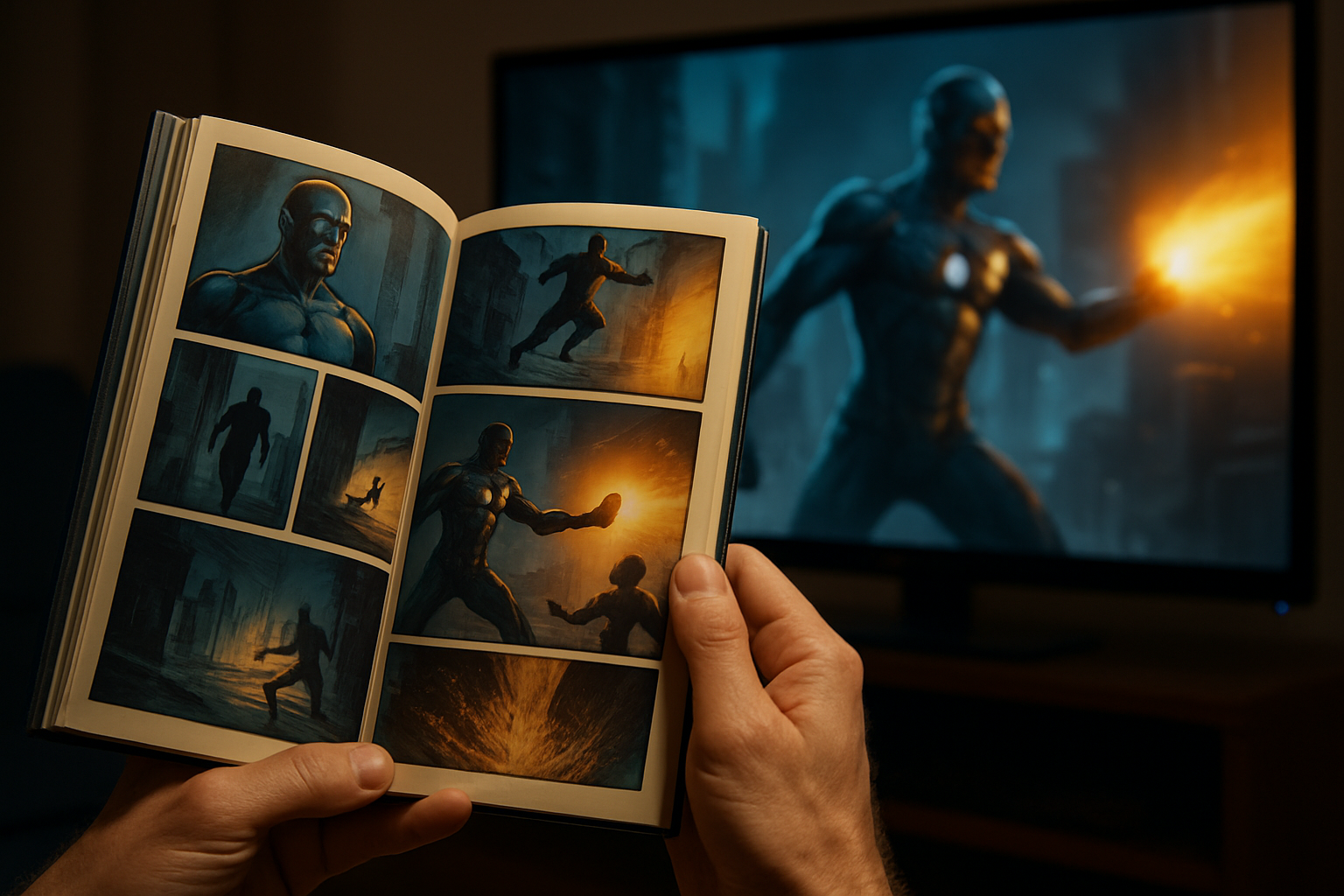From Page to Screen: The Nuances of the Graphic Novel Adaptation
In recent years, an intriguing trend has emerged in the entertainment industry: graphic novels are increasingly being adapted into films and television series. This surge of interest raises compelling questions about the intricacies of translating these unique forms of storytelling to the screen.

A Glimpse into the Past: The Roots of Graphic Novels
The graphic novel, a term coined in the late 1960s, is a format that combines sequential art with literature. Its roots can be traced back to the comic strips of newspapers and pulp magazines. The 1980s saw the publication of seminal works such as Art Spiegelman’s ‘Maus’ and Alan Moore’s ‘Watchmen,’ which challenged the perception of this medium as mere entertainment for children.
Graphic Novels in the Modern Era: The Paradigm Shift
The perception of graphic novels has significantly evolved over the past few decades, with these books now being recognized for their complex narratives and artistic merit. They are no longer confined to the genres of superheroes and science fiction, but explore a broad spectrum of themes, from memoirs and historical accounts to socio-political commentaries.
The Cinematic Appeal: Adaptations Take Center Stage
The shift in the cultural status of graphic novels has led to their increasing presence on screen. Notable adaptations include ‘300’, ‘V for Vendetta’, ‘Sin City’, and more recently, the Netflix series ‘The Umbrella Academy’. These adaptations have not only been commercial successes but have also garnered critical acclaim, reinforcing their legitimacy in the cinematic sphere.
Assessing the Impact: The Significance and Challenges of Adaptations
The adaptation of graphic novels into films and series serves to expand their audience and increase their cultural impact. However, it also presents unique challenges. The visual language of graphic novels, their episodic structure, and the interplay between text and image all pose potential difficulties when it comes to translating these narratives into a different medium.
Looking Ahead: The Future of Graphic Novel Adaptations
With their captivating narratives and distinctive aesthetics, graphic novels offer a rich source of material for filmmakers. As this trend continues to gain momentum, it is crucial for adaptations to capture the essence of their source material while also exploring the unique storytelling possibilities of the cinematic medium. This delicate balance between fidelity and innovation will shape the future of graphic novel adaptations.
In conclusion, the rise of graphic novel adaptations signifies a shift in cultural perceptions, acknowledging the artistic value of this medium. As we look forward to more adaptations, the challenge lies in maintaining the integrity of these complex narratives while harnessing the potential of cinema. The dialogue between these two mediums is bound to result in compelling storytelling, shaping the future of entertainment.





